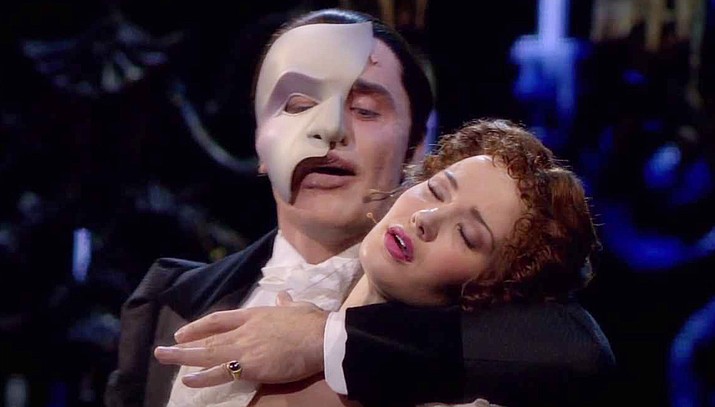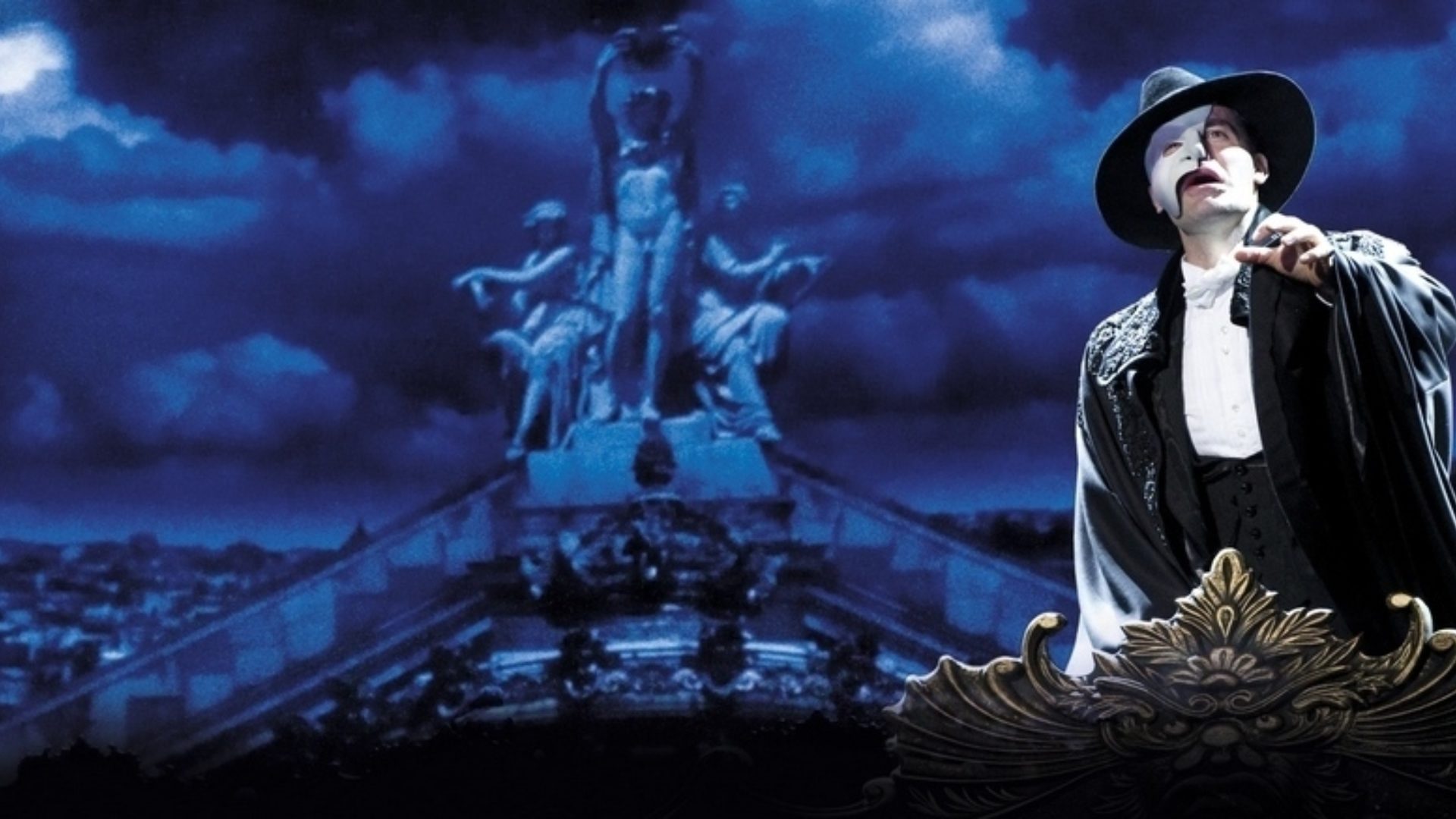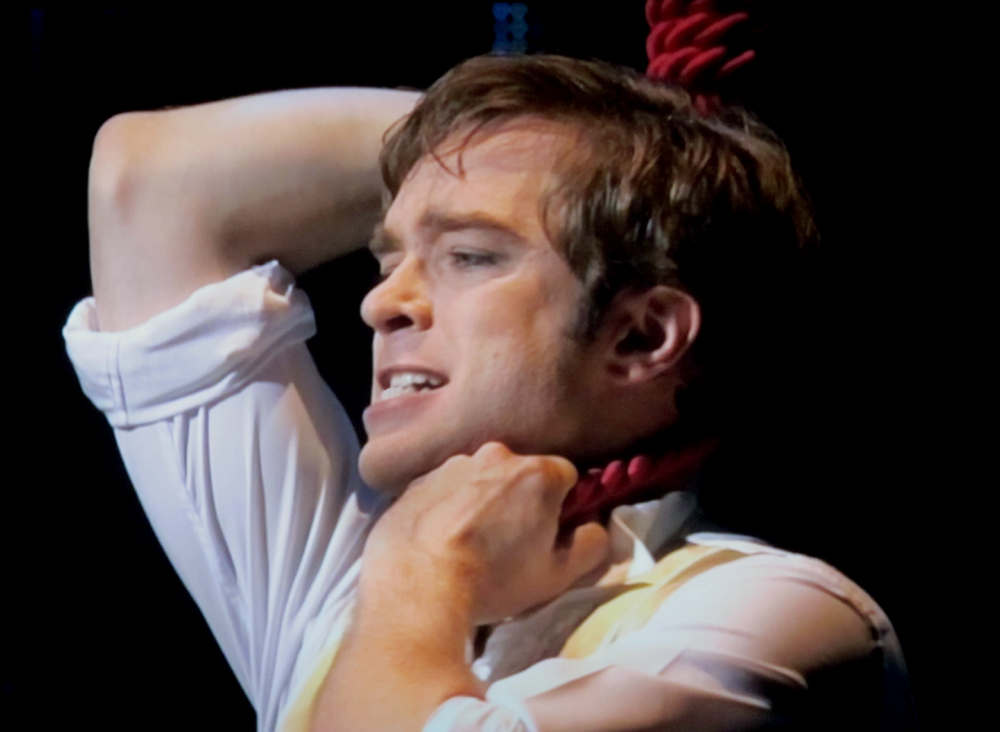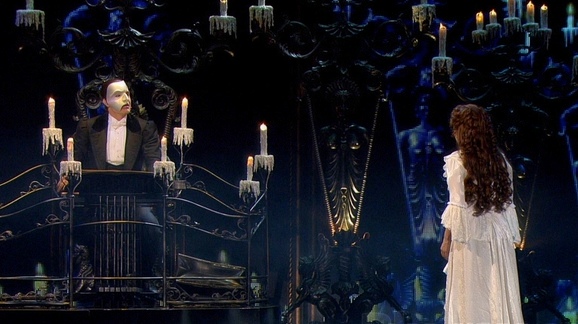
Andrew Lloyd Webber couldn’t have chosen a better time to share with the world the 25th anniversary performance of The Phantom of the Opera than today, when people, contrary to human nature, isolate themselves at home and, should they go out, kill the urge to look at each other, smile, even beneath the face mask, and perhaps even flirt in the name of social distancing.
By ALEX Y. VERGARA
Would you love a lonely and virtually quarantined suitor who, behind that mask and no matter how seemingly kind and brilliant he is, looks just a tad better than a zombie from The Walking Dead? Or would you, in your own isolation, rather get physical with a beautiful stranger, novel coronavirus be damned? Well, as Ursula, the eight-tentacled villainess in The Little Mermaid once put it, “life’s full of tough choices.”
Andrew Lloyd Webber and his cohorts couldn’t have chosen a better time to share with the world the 25th anniversary performance of The Phantom of the Opera than today, when people the world over, contrary to human nature and every societal norm humankind has come to embrace, isolate themselves at home and, should they go out for the occasional “grocery run,” kill the urge to look at each other, smile, even beneath the face mask, and make small talk and perhaps even flirt in the name of social distancing.
Performed live at London’s Royal Albert Hall, the musicale was filmed and live-streamed in select cinemas in 2011. It was shown again last weekend, this time for free, on the Show Must Go On YouTube channel to a locked-down global audience, as part of the weekly stream of Webber’s works to raise money for charity.

The free shows continue this weekend, also on YouTube, with Love Never Dies, the sequel to the durable and phenomenal hit, which revolves around naive but talented ingenue Christine Daae, played by Sierra Bogges, and the men in her life battling for her affection—her genius but equally cruel and scheming mentor, the Phantom-slash-Opera Ghost, played by Ramin Karimloo, and the rich, dashing and earnest Raoul/Vicomte de Chagny, essayed by Hadley Fraser.
With the inimitable Sarah Brightman, Webber’s ex-wife and his original “angel of music,” and Michael Crawford as originators of lead roles Christine and the Phantom, respectively, Sierra and Ramin have their work cut out for them. But despite the formidable challenge of having had to fill such big shoes, the two are able to hold their own.
Sierra’s acting, apart from coming across as earnest and sincere, complements her crystal-clear singing voice, which has no trouble hitting the high notes. Oozing with sex appeal underneath the Phantom’s iconic white mask, Ramin’s powerful singing and achingly felt lovelorn performance are already worth the virtual ticket price. His soaring voice perfectly captures the Phantom’s power and frustration over Christine.
But Hadley, despite the rather predictable role assigned to him, is no slouch either, as he was able to match toe to toe Ramin’s more flamboyant and vocally demanding role.
Wendy Ferguson, as the insecure and over-the-top diva Carlotta, is such a delight to watch, as she and Wynne Evans (Ubaldo Piangi), Barry James and Gareth Snook (the latter two play the new bumbling theatre owners Richard Fermin and Gilles André) provide much-needed comic relief to an otherwise somber production.

Providing solid support with their strong stage presence, and proving once more that there are no small roles, just small actors, are Liz Robertson (Madam Giry) and Daisy Maywood (Meg Giry).
And, for good measure, the show treats its audience, right after the cast’s curtain call, to a surprise encore graced by stage heavyweights worthy of a milestone 25th anniversary show. Now that it’s no longer being shown for free, we won’t spoil the surprise, as we leave it up to you to either stream or secure a copy of the show.
Set during the latter half of the 19th century at the Paris Opera House (Opera Populaire), the production, despite the Royal Albert Hall’s limited space (it wasn’t designed for such big musicales), dazzled and translated well from stage to screen, thanks in part to the magic summoned by modern-day technology such as multiple digital screens that, with the help of Patrick Woodroffe’s lighting design, instantly change the mood on stage—from light and cheery one minute, as best exemplified in the New Year’s masquerade ball, to dark and foreboding the next, especially in scenes set in the Phantom’s underground lair.
The same visual tricks is used to full effect in the dramatic rooftop scene, where a push and pull of romance and danger lurk as lovers Christine and Raoul, running away from the chaos below, vent off steam and break into “All I Ask of You,” the musical’s signature love song, before leaving the scene just in time for the Phantom, who has been hiding from them all along, to reemerge on top of a glass copula and vow vengeance.

The same digital screens also help the production do away with certain physical props such as the two-way mirror leading to the Phantom’s hideout. Like the mood-setting candelabras that have become the show’s trademark, the device heightened the mirror’s impact by amping up its size as well as its reflections to exaggerated proportions.
In lieu of an absent orchestra pit, the show’s production designer elevated the orchestra above the stage’s line of sight, thus leaving the cast with more room to prance and dance, as seen, for instance, in the iconic “Masquerade/Why so Silent” number, a joyous and colorful visual feast that opens Act 2, only to be quickly dampened by the Phantom’s reemergence after a supposed six-month absence.
It’s also in the “Masquerade” scene that the genius of the late costume designer Maria Björnson is on full display, as the show reportedly used the bulk of her costumes from the original production.
The music, both in the literal and figurative sense, soars, as members of the orchestra, playing from their lofty perch, give it their all, as they breathe new life to some of Webber’s more hummable, recognizable songs and signature refrains. Yes, including the now familiar and bombastic opening notes of the “Overture,” embedded most likely in every theatre lover’s brain, which makes full use of synthesizers that mimic a church organ.
Giving it a movie feel is the production’s amazing camera work, which, thanks to multiple cameras that are likely remote-controlled from afar by computers, is both, in my book, a bane and a boon for livestream audiences watching a theatre-staged musicale.

A boon, as it allows locked-down spectators like us to see certain details we would have otherwise missed had the cameras remained steady and on panoramic mode, and a bane, as it somehow diminishes the illusion and magic of live musical theatre by giving away too much, including some of the performers’ likely ages during those extreme closeups. After all, the medium is still the stage, not the silver screen, where certain details are better left unseen and percolating in the viewer’s imagination.
The only real dampener, perhaps, among purist fans is the chandelier. If Miss Saigon has its helicopter, The Phantom of the Opera has its “crashing” chandelier, “a disaster beyond your imagination” made good by the Phantom, as he unleashed his wrath, show after show, in almost every staging of the well-loved musicale, including Joel Schumacher’s movie version in 2004 and the Australian production staged years ago at the Cultural Center of the Philippines in Manila.
Instead, what both theatre and livestream audiences get are a series of faux explosions placed around the Royal Albert Hall’s main chandelier before lights are suddenly turned off, signaling the end of Act 1 and, in due time, the beginning of Act 2 and the Phantom’s eventual “Point of No Return.”
Don’t forget to catch Love Never Dies this weekend on YouTube






